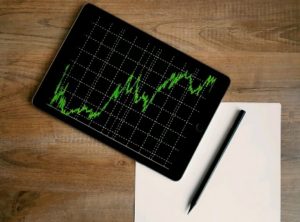Valuation of a business is the process of determining the economic value of owners’ interest in a business. It is the present value of a business on that particular date.
Various purposes of valuation include the sale of business, mergers, and acquisitions, the fundraising process, establishing a new partnership, or even divorce proceedings. It assesses the worth or potential of the business. The valuation of a business needs to be understood with the valuation models.
Contents
What are the Methods for Business Valuation
The following are three fundamental approaches or models widely used in industry for valuation purposes:
- Cost approach
- Market Value approach
- DCF (intrinsic value) approach.
(1) Cost Approach
This method uses the balance sheet data to assess the value of the concern. It considers the group of assets and liabilities held by a business and the difference between assets and liabilities is the business value, i.e. Net Asset Value.
It is also called an Asset Based Model. It is based on the economic principle of substitution. It exhibits the cost of re-building a company i.e, The replacement cost of a business.
(2) Market Value Approach
The market value approach for business valuation considers the fair market value of a business. It is a relative method of valuing a business, which is based on the economic principle of competition.
In this method, we compare the price at which similar businesses are acquired and sold in the industry.

(3) Discounted Cash Flow (DCF)/Intrinsic-Value Approach
Intrinsic value is nothing but the true worth or fair worth of a firm. In this method, the value of a business is the function of its ability to generate cash flows in the future.
In investing, the use of the DCF method is very significant.
Also Read;
DCF method considers the present worth of future cash inflows expected from a given business. It considers the time value of money and risk factor to arrive at the present worth of a business, based on its ability to generate cash inflows.

The following are various components required to calculate the value of the firm.
- Formula – Present Value of Future Cash Flow = ∑ Free Cash Flows for nth-Year / (1 + Discounted-Rate)^n
- Cash flows – In a DCF model, the first step is to estimate the cash flows accurately that the business will generate in the future and that could be paid to the investors.
Cash flows to value a firm can be either to just equity shareholders (only equity) or to all suppliers of the capital (Net cash flows invested into the firm).
- Free Cash flows to Equity (FCFE) – This is the free cash available to the equity shareholders, after meeting all operating expenses, reinvestment needs, and an increase in working capital. In this estimation of potential dividends to the shareholders, which is the free cash flows to the equity investors, which is calculated as follows:
|
Net Income |
XX |
|
( – ) Capital Expenditure |
xxx |
|
( + ) Depreciation and Non cash items |
xxx |
|
( – ) Changes in Working Capital |
xxx |
|
( – ) Principal Repayments |
xxx |
|
( + ) New debt issues |
xxx |
|
Free Cash Flows to Equity: |
XXX |
- Free Cash Flows to the Firm (FCFF) – As the firm raises funds from equity and debt holders, this is the cash available with the company to pay the bond and stock investors after meeting all operating expenses and investment needs.
Free Cash Flows to the Firm = (EBIT – Tax) – (Capital Expenditure – Depreciation) – Change in working capital
|
After-Tax Earnings |
XXX |
|
( + ) Depreciation |
xx |
|
( – ) Capital Expenditure |
xx |
|
( – ) Changes in Working Capital |
xx |
|
Free Cash Flows to the Firm |
XXX |
Note: In the former case it was Net income as we are calculating free cash flows only to equity shareholders, but in the latter case we adjust operating income with taxes.
- Discounted Rate – Generally, the Weighted Average Cost of Capital is used as the discount rate to bring future cash flows to its present worth.
It is also known as the average cost of capital or composite cost of capital, as it considers the aggregate cost of raising funds from various sources.
However, firms with higher risk are valued at a higher rate,s and firms with safer cash flows are discounted at lower rates to adjust the risk factor.
Another way to look at the discounted rate is the yearly-return investors of the business expect from their business.
- Terminal Value / Continuing value – This is the trickiest part of the valuation. The forecast of cash flows has to be made for the known and the remaining period. It cannot be estimated forever. The future cash flows during the remainder period are termed as residual value or terminal value. In the case of terminal value, it is assumed that a business will grow at a set growth rate forever beyond the forecast period.
Terminal Value = FCFF* (1 + g) / (R – g)
Where;
FCF = Free cash flow for the last forecast period
g = Terminal growth rate
R = discount rate
- Growth Rate – Determining the growth rate is the most challenging. Looking at the past data gives us the historical value, which would have changed over the period due to numerous factors. Therefore, the growth rate has to be estimated considering future prospects. There are two sources from which growth is determined, new investments that expand the business and improved returns on existing investments.
Here is an example of the calculation of Free Cash flows to Equity for clear understanding:
|
CASH FLOW OF Business (in Rs. Cr.) |
||||||
|
|
Mar-20 |
Mar-19 |
Mar-18 |
Mar-17 |
Mar-16 |
|
|
|
12 mths |
12 mths |
12 mths |
12 mths |
12 mths |
|
|
NET PROFIT/LOSS BEFORE EXTRAORDINARY ITEMS AND TAX |
16,639.00 |
15,410.00 |
16,029.00 |
14,353.00 |
13,489.00 |
|
|
Net CashFlow From Operating Activities |
17,003.00 |
14,841.00 |
13,218.00 |
11,531.00 |
10,028.00 |
A |
|
Net Cash Used In Investing Activities |
-239 |
-575 |
4,452.00 |
-14,542.00 |
-901 |
B |
|
Net Cash Used From Financing Activities |
-17,591.00 |
-14,512.00 |
-20,505.00 |
-6,939.00 |
-6,813.00 |
|
|
Foreign Exchange Gains / Losses |
-92 |
-57 |
81 |
-122 |
16 |
|
|
Adjustments On Amalgamation Merger Demerger Others |
0 |
0 |
0 |
0 |
0 |
|
|
NET INC/DEC IN CASH AND CASH EQUIVALENTS |
-919 |
-303 |
-2,754.00 |
-10,072.00 |
2,330.00 |
|
|
Cash And Cash Equivalents Begin of Year |
19,568.00 |
19,871.00 |
22,625.00 |
32,697.00 |
30,367.00 |
|
|
Cash And Cash Equivalents End Of Year |
18,649.00 |
19,568.00 |
19,871.00 |
22,625.00 |
32,697.00 |
|
|
|
a |
b |
c |
|
|
|
|
Free Cash Flow (A-B) |
16,764.00 |
14,266.00 |
17,670.00 |
-3,011.00 |
9,127.00 |
|
|
||||||
|
||||||
|
Average of free cash flow (a+b+c)/3 |
16,233.33 |
f |
||||
|
CAGR |
25.46% |
d |
||||
|
WACC |
11.20% |
e |
||||
|
Difference (d-e) |
14.26% |
g |
||||
|
YEAR |
Future Cash Flow |
PV (11.42%) |
DCF |
|
||
|
Year 1 |
20366.34 |
0.897504936 |
18278.89068 |
h |
||
|
Year 2 |
25551.61016 |
0.805515111 |
20582.20809 |
i |
||
|
year 3 |
32057.05011 |
0.722953788 |
23175.76581 |
j |
||
|
Determination of Present Value in respect of terminal value(f*g) |
2314.873333 |
k |
||||
|
Total value of the firm(h+i+j+k) |
64351.73792 |
l |
||||
|
Debt value |
3,031.00 |
m |
||||
|
Value of Equity(l-m) |
61,320.74 |
|
||||
Important Steps to determine Valuation based on the Discounted Cashflow Method:
Step 1: Difference between Cash flow from operating activities (refer Note) and investment activities are calculated to arrive at Free cash Flows
Step 2: Average of past three years cash flows are captured and multiplied with CAGR (Compounded Annual Growth Rate) of the company to project Future Cash Flows.
Step 3: Calculation of Terminal Value using the formula.
Step 4: Estimated Future Cash Flows are discounted with the Weighted Average Cost of Capital.
Step 5: Present Value of Future Free Cash Flows is summed up and debt value is deducted from it to arrive at Free Cash Flows to Equity, which is the value of the firm.
Step 6: This value can be compared with the price, investors are ready to pay and a wise decision can be taken
(Note: Cash flows from operating activities is a section of a company’s cash flow statement that explains the sources and uses of cash from ongoing regular business activities in a given period. This typically includes net income from the income statement, adjustments to net income, and changes in working capital.)
As the Discount Cash flow technique considers cash flows of a project for its economic life, time value of money and remains unaffected by depreciation methods, it is the most stable method to determine the intrinsic value of the firm.
Conclusion:
The discounted cash flow method is purely based on the assumptions of future cashflow. What if the assumptions went wrong? The calculation made on assumption will be inaccurate. DCF is applied only when the future cash flow can be determined with enough certainty.
Mr. Warren Buffet applies the DCF method that’s why he only looks for the businesses that generate predictable free cash flow, what he called Owner’s earning.
When the intrinsic value of a business is greater than the market value, we called their stock is underpriced, whhen the intrinsic value of a business is less than the market value, then what we called their stock is overpriced.
And whenever the intrinsic value of a business is equal to the market value, we say their stock is fairly valued.
In a nutshell, the intrinsic value method or discounted cash flow method is the most widely used method and will remain while the valuation of businesses.
Which method will you use? Comment below!



Good article
Thanks!
Informative article mam.